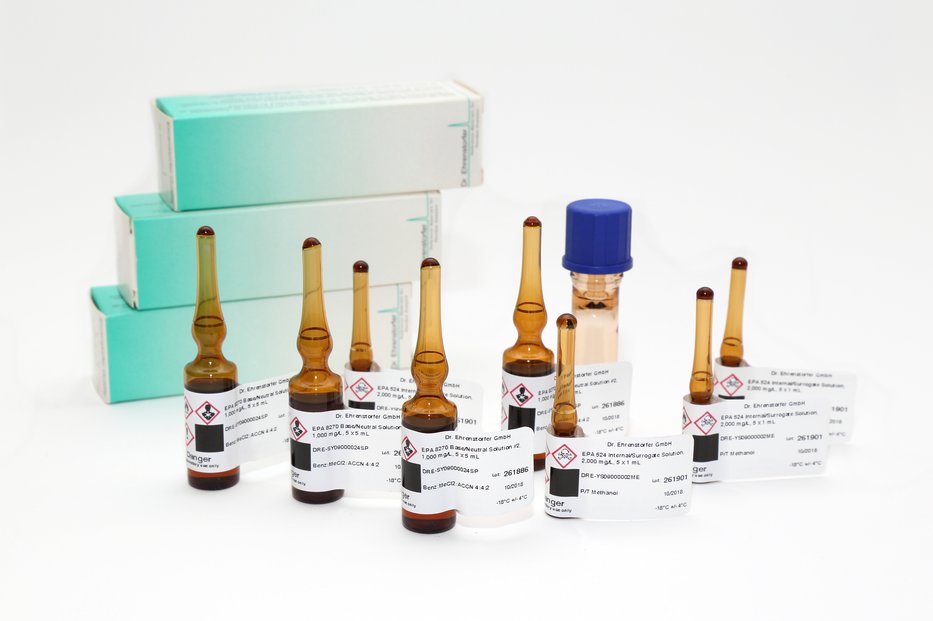Specifications:
| Application | Biochemistry | ||
| Storage Temperature | -20°C | ||
| Product Type | Standards | Forms | Solid |
| Product Brand | LGC Standards | ||
| Product Grade | Analytical grade | Formula | C₁₉H₃₁D₅O₃ |
Glycidyl Palmitate-D5 is a deuterium-labeled compound featuring a palmitate ester linked to a glycidyl group. This compound contains five deuterium atoms, making it highly suitable for use in isotope-labeling studies, mass spectrometry, and metabolic tracing. Glycidyl Palmitate-D5 is a synthetic analog of glycidyl esters commonly found in fats and oils, and its isotopic labeling allows for precise tracking and quantification in complex biological systems.
Chemical Properties
| Property | Details |
|---|---|
| Chemical Name | Glycidyl Palmitate-D5 |
| Molecular Formula | C19H33D5O3 |
| Molecular Weight | ~319.53 g/mol |
| Structure | Glycidyl group esterified with deuterium-labeled palmitic acid (C16:0). |
| Isotopic Labeling | Five deuterium atoms in the palmitate chain. |
| CAS Number | 1794941-80-2 |
Applications
- Isotope-Labeled Tracing:
- Used as an internal standard in lipidomics studies for accurate quantification of glycidyl esters.
- Enables tracking of ester metabolism and transformation in biological systems.
- Mass Spectrometry:
- Provides a distinct isotopic signature for reliable detection in LC-MS or GC-MS workflows.
- Improves analytical accuracy and reproducibility in complex lipid mixtures.
- Food and Nutritional Analysis:
- Investigates the occurrence and metabolism of glycidyl esters, which can form during the processing of fats and oils.
- Assesses the safety and breakdown of glycidyl compounds in food products.
- Pharmacological Studies:
- Explores the role of glycidyl esters in biological pathways and their potential toxicological effects.
Key Features
- Deuterium Labeling:
- Five deuterium atoms provide a clear isotopic shift for analytical purposes.
- Ideal for quantitative analysis in complex biological or chemical samples.
- High Purity:
- Synthesized to meet stringent purity standards, ensuring reliable experimental outcomes.
- Lipid-Like Behavior:
- Mimics the structure and functionality of naturally occurring glycidyl esters, making it suitable for realistic modeling in research.
Physical Properties
| Property | Details |
|---|---|
| Appearance | White to off-white powder or crystalline solid. |
| Solubility | Soluble in organic solvents such as chloroform, methanol, and ethanol. |
| Storage Conditions | Store at -20°C in a dry, dark environment. Protect from moisture and air exposure. |
| Stability | Stable under recommended storage conditions. Avoid prolonged exposure to high temperatures. |
Mechanism of Action in Research
- Metabolic Tracing:
- Glycidyl Palmitate-D5 enters metabolic pathways similarly to unlabeled glycidyl esters.
- Its isotopic labeling allows for detailed tracking of degradation and biotransformation processes.
- Analytical Quantification:
- Functions as an internal standard to measure glycidyl esters in food products, oils, and biological samples.
Handling and Safety
- Safety Precautions:
- Handle in a well-ventilated area while wearing appropriate personal protective equipment (PPE), including gloves and safety goggles.
- Avoid inhalation, ingestion, and contact with skin or eyes.
- Hazard Classification:
- Consult the Safety Data Sheet (SDS) for detailed handling and disposal instructions.
- Dispose of waste according to institutional and regulatory guidelines.
Applications in Research
- Food Safety and Toxicology:
- Studies the formation and metabolism of glycidyl esters during food processing.
- Assesses potential health risks associated with glycidyl ester consumption.
- Lipidomics:
- Examines glycidyl ester distribution and behavior in lipid profiles.
- Investigates their role in cellular and metabolic pathways.
- Environmental Studies:
- Tracks the persistence and breakdown of glycidyl esters in environmental samples.
- Biochemical Pathways:
- Explores interactions with enzymes and transport proteins involved in lipid metabolism.
Glycidyl Palmitate-D5 (G615954) is an indispensable tool for researchers focused on lipidomics, food safety, and metabolism. Its deuterium labeling offers enhanced sensitivity and accuracy in analytical studies, making it ideal for tracking and quantifying glycidyl esters in complex matrices. With applications ranging from food science to pharmacology, Glycidyl Palmitate-D5 is a versatile compound for advancing lipid research.




 0
0
